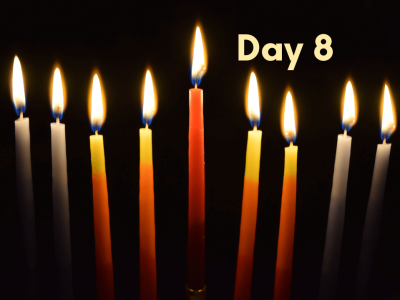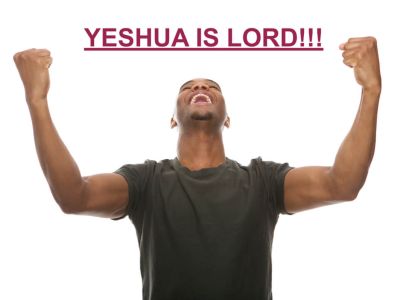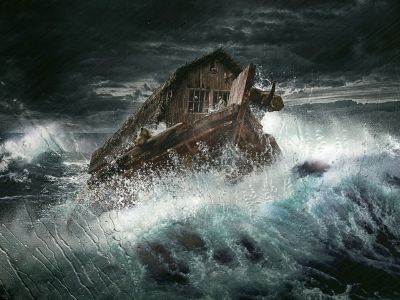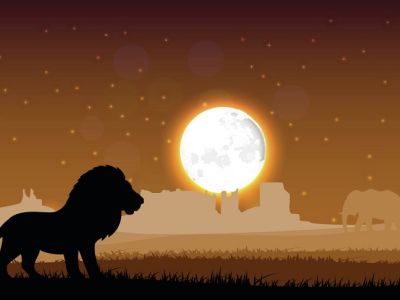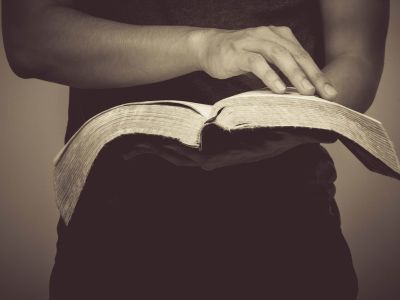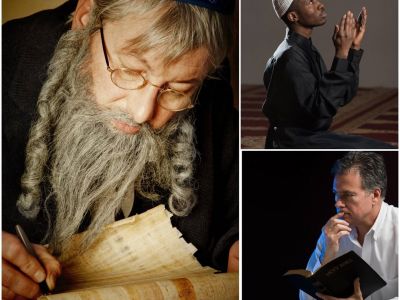The Feast of Tabernacles Part 4
The Feast of Tabernacles Part 4
The Light of the World
The Feast of Sukkot, or Tabernacles, is known by and encompasses many different attributes. One of the most powerful and often overlooked attributes is the Feast’s connection to light. Light is one of those staple items that finds itself vital in both the natural and spiritual world. From day one of Creation to the lights of the city of Jerusalem coming down out of heaven at the end of Revelation, light is a major subject of the Bible. Light and its counterpart, darkness, seem to be the subject of many a story in biblical text. In the Feast of Sukkot, light is one of the primary components of the entire holiday.
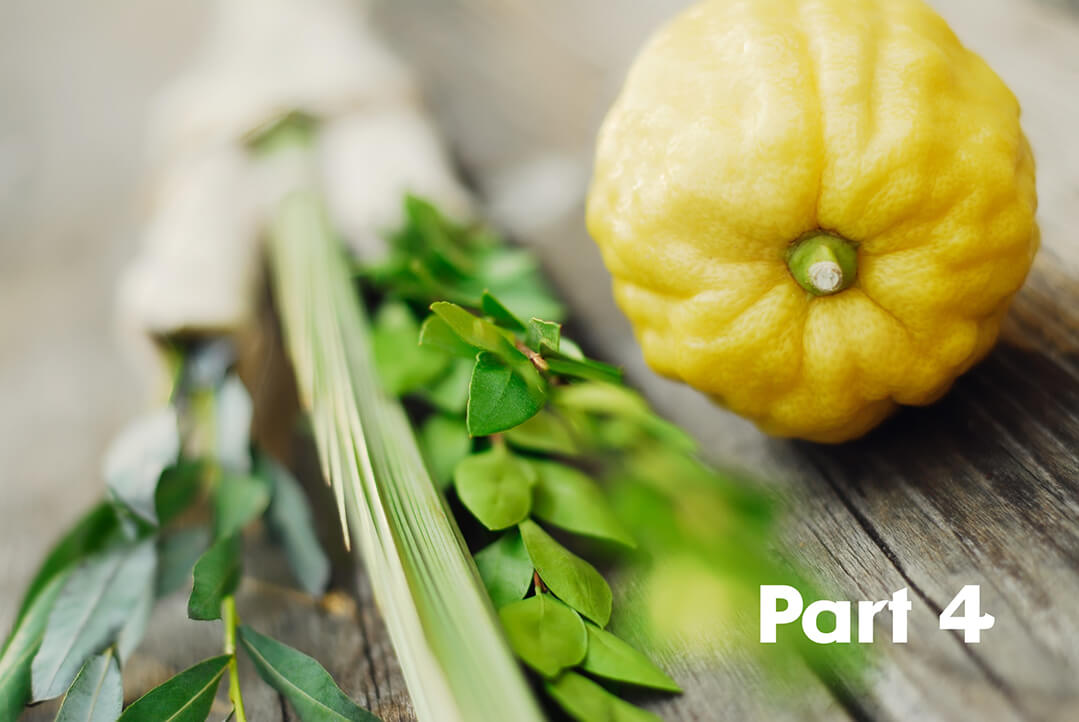
The first light found associated with this Feast is the moon itself. Let’s go back to Leviticus 23 and discover the role of the moon in this glorious celebration.
Leviticus 23:33 “Then the LORD spoke to Moses, saying, “Speak to the children of Israel, saying: ‘The fifteenth day of this seventh month shall be the Feast of Tabernacles for seven days to the LORD.'”
In the biblical calendar, times and seasons (appointed feast days) are calculated using the moon: the first of the month will always be during a new moon, and the fifteenth of the month will always be during a full moon. Understanding this, calculating the start date of Sukkot is actually quite easy—so easy a child could do it. I believe our Creator calls us children for a reason. He knows how we think, and He’s ordered His events so that all we have to do is look into the sky and count full moon to full moon. It’s just that simple.
The moon was so vital during this holiday that Philo, a first-century Jewish historian, said that the reason God placed the festival in the middle of the month was so there would be no darkness during the feast whatsoever. This little tidbit gives us a look into the mind of the first-century followers of God who believed that this was to be a festival full of light. Before we dive any deeper into this subject, let’s unpack the word in the original language and see what we can find.
The primary word for light in the Hebrew language is the word “ore“: spelled aleph, vav, resh. In the ancient paleo pictograph Hebrew, where every letter was originally a hieroglyphic picture, the meaning of light is striking. The letter aleph was originally an ox head that meant “the strength of the leader.” The letter vav was a nail and meant “nail, tent peg, to connect, to bridge.” The letter resh was a picture of a man’s head and literally meant “head, beginning or the head of something.” When you put those concepts together, the word means “The strong leader (Yahweh) brings a firm connection to the Head (Christ)!” The very word “light” teaches us how to find it!
In Bible times, they did not have electricity; the light in those days simply came from fire. To be more specific, that fire came mainly from oil lamps of all shapes and sizes. The two familiar components of all oil lamps were olive oil and a wick. During the Great Feast in Jerusalem, the festivities on the Temple Mount lasted throughout the night. According to the ancient sages of Israel, “Whoever has never seen the celebrations of the Festival of the Water Libation has never experienced true joy in his life… (ibid.5,1) there was not a single courtyard in all of Jerusalem that was not illuminated by the light of the Festival of the Water Libation” (ibid,3). That is a lot of light!
One of the main ways that they lit the Temple grounds was from their own massive parking lot type lights. These structures consisted of four huge bowls of oil that were erected on a single pole so that each bowl faced the compass points of North, South, East, and West. The prophetic reason is obvious: They wanted to cast light from the Temple to the four corners of the earth. But the prophetic connection doesn’t stop there. Each and every year, the priests were given new garments. Do you know what the wicks of these massive lights were made of? They used some of the old priestly garments to actually BE the light for the people! Now check this out:
Psalm 22:18 “They divide My garments among them and for My clothing they cast lots.”
This chapter is a major Messianic Psalm that gives us great insight into the crucifixion of the Messiah. It was prophesied here that they were going to divide his garments right after they crucified him through his hands and his feet (v16). Now, let’s go to the fulfillment of this prophecy in the book of John:
John 19:23 “Then the soldiers, when they had crucified Jesus, took His garments and made four parts, to each soldier a part and also the tunic.”
Did you see that? They took his garments and tore them into four different parts! They did not tear the tunic for it was very valuable, but His garments they tore into four different parts. Do you think that it was just a coincidence that it was torn into four parts? Not at all! This is a prophetic allusion to the four wicks made of the priestly garments: wicks used to light the four lamps that are to be the light of the world! Even in His death, His light shines for all to see!
The entire purpose of light is so that we can see clearly to walk on the path that is before us. Psalms 27:1 says that Yahweh is light, and 1 John 1:5 says that “God is light and in Him there is no darkness at all.” Since darkness first came upon the earth from the sin of Adam, it has been God’s desire to lead His people back to the righteous path leading to His side. He instructs us in the darkness by being a “lamp unto our feet and a light unto our path” (Psalm 119:105). If the intent of Yahweh is to help us navigate through the darkness into His marvelous light, by what method does He choose to do so?
Proverbs 6:23 “For the commandment is a lamp, and the law [Torah] a light. Reproofs of instruction are the way of life.”
God tells us over and over that it is His Torah instructions that are the light which leads us on our way back to Him. To walk in darkness is not to follow His instructions, and to walk in the light is to follow His instructions. To walk partly in light and partly in darkness, which is called “lukewarm” in the Scriptures (Revelation 3:16), is a status that is frowned upon by the Almighty.
Although it would be tempting to focus on the black and white of the above verse where it is clear that God uses the Torah to guide us as our light in this dark world, it would not be prudent to ignore the rest of this verse which gives us the method by which He transfers His life and blessing to us. It says that “[r]eproofs of instruction are the way of life.” The Hebrew word Torah actually means “instruction”; it is the light that came from Him to help us find the path back to the Garden of Life. The “way” He chooses to bring forth that light within us is through reproof: correction, discipline, and rebuke. The Father disciplines those He loves. He doesn’t correct because He is angry. He corrects because He sees the potential of the light, and He wants to bring that light forth so that it can accomplish its purpose. After all, what is actually burning in the lights in the Temple but the olive oil itself. And how is the olive prepared so that it can actually bring forth the oil that is necessary to be used for light?
Exodus 27:20 gives us a clue. “And you shall command the children of Israel that they bring you pure oil of pressed olives for the light, to cause the lamp to burn continually.”
Unfortunately, the NKJ version of this verse does not capture completely the original idea. They interpret the word /kawteet/ as “pressed” when in fact the KJV actually had it right by translating it as “beaten.” The translator apparently knew that olives were not beaten like grapes; they were pressed. So, he just assumed that the writer meant pressed instead of beaten. But that does an injustice to the text because the writer used the word “beaten” for a reason. He was not talking about the actual pressing of the olives but the beating of the trees with sticks in order to cause the fattened olives to fall to the ground where they could then be gathered together to be pressed. It was this part of the process that the writer was referring to.
Too often God’s people get too comfortable and too fat and they need to be shaken up in order to draw out of them the true light that is inside. Unfortunately for us, this shaking comes in the form of “reproofs” and from the stick of our enemies. In the same way that the olive becomes scared to death by the stick that is dangerously close to his fragile body, the Father uses our enemies to shake us to the ground. It is at this point that we normally cry and complain and blame God for everything that we think is wrong. Just like the olive, the stick forcing him from the branch he was so comfortably attached to and to the ground in a painful impact, we shake our fists at God over how far we have fallen. We have no idea what He is about to do.
The olive is then gathered from the ground by the Master, placed in a dark basket with other fallen olives, and taken to the olive press where he will be pressed: split open to reveal the true secret inside. He now finds himself without the ability even to speak as his life is split open before all. All he can do is cry from the crushing of his fragile body. But his tears are tears of pure oil that drop down into a special container. Not a single tear is lost to the Master. Every single one is gathered and accounted for. Those first drops are the most precious, and it is those that will be used as the oil to light the lamps in the Temple.
It is so difficult to allow the Father to shake our world, turn it upside down, and cause us to come crashing to the ground. I have felt this crashing blow in my own life, and I know many of you have felt it as well. If we only knew and truly understood His motive and His great plan. He is not trying to humiliate us, hurt us, or crush us beyond repair. He is trying to make us the light of the world! In John 8:12, Yeshua says that He is the light of the world. He became the light when He allowed the Father to shake Him. His enemies beat Him and pressed Him against the stake of the cross, and He told all those who were His disciples that they were to walk in His footsteps. He went on to tell them to “let their light shine before men” (Mathew 5:16). These men spent the rest of their lives being persecuted, pressed down, and humiliated. That process is what shook them from their tree and caused the true light inside of them to shine for all to see. It is His process of causing us to decrease so He can increase (John 3:30).
The priests had to give up their old garments and allow them to be burned in order to get new garments, and the olive had to fall from the tree in order to meet its true destiny. The olive that was beaten and painfully pressed and the garment of the priest that was discarded and abandoned just so happened to be THE two items that were used during the Feast of Tabernacles to bring light to all of Jerusalem and beyond. It was their painful journeys that brought light to the nations.
Yeshua’s journey IS our journey.
So, the next time your “garments” are being ripped from your body and your possessions are taken and given to your enemies, rejoice! The Father is about to bring forth your light as the light of dawn and a resurrection that will roll away the stone that holds you captive. If you stay in His press and allow Him to finish His work in you, your tears will become tears of joy as the Father chooses to light you on fire for Him! This is why we are to “consider it pure joy when [we] face trials of many kinds” (James 1:2). When we let the Father finish His work in us, He will produce a light that is so strong and so bright that the strongest wind from the strongest storm will not be able to put it out!
Shalom,
Jim Staley





